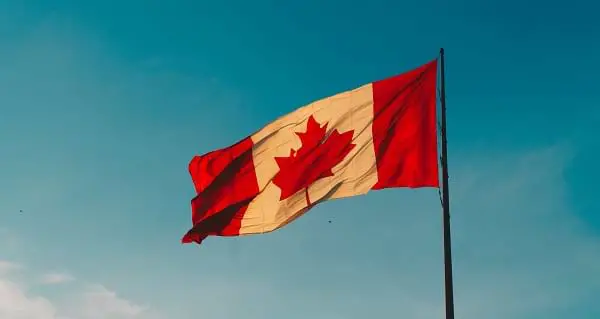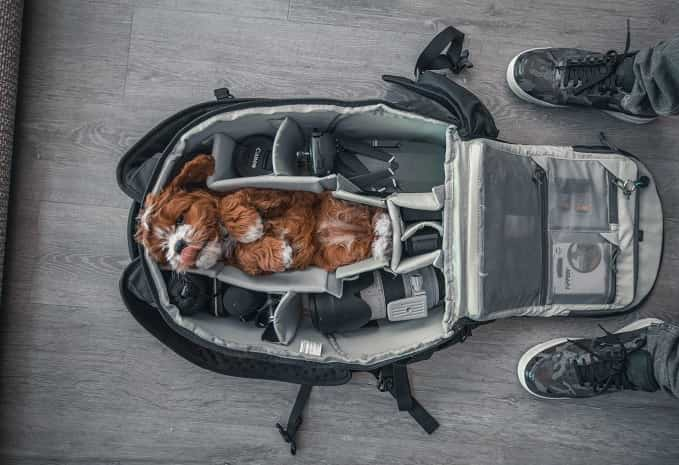
Are you planning a trip to Canda from the U.S or any other foreign destination to get some drone footage of Canada’s beautiful mountains and vast wilderness areas? If yes, then hold on just one minute. First, find out if you’re legally allowed to fly your drone in Canada.
According to the transport of Canadian Civil Aviation,(TCCA,) to legally fly a drone in Canada the owner needs to register the drone with TCCA. To register, you need to be a resident in Canada, which is impossible for a foreigner. So yes, it is illegal to fly a drone in Canada as a foreigner.
In short, it’s not that flying a drone in Canada is illegal. The problem is two-fold. First, it’s illegal to fly an unregistered drone, and second, one of the requirements for you to be able to register a drone is you need to be a Canadian citizen.
Who exactly can register a drone?
Qualifications Needed To Register a Drone in Canada
According to the Canadian Aviation Regulation, there are four “qualifications” that all drone pilots need to have before they can successfully register, you need to be one of the following:
- Canadian citizen.
- Permanent resident of Canada.
- A corporation that is bound by local federal laws.
- A government entity.
[SOURCE]
As you can see, there’s nothing that shows that foreigners are allowed to register. This spelled out in English, unfortunately, means that there is currently no possible way for foreigners to fly a drone in Canada.
Traveling To Canada With A Drone

Does all this mean that you can’t even take your drone to Canada? What if you want to take it over as a gift for a family member etc.
Traveling with your drone to Canada should be perfectly fine, there are no laws that say otherwise. Aiport staff and airport customs are used to people bringing in all sorts of items into the country for a bunch of reasons. The problem only starts once you try to fly the drone on Canadian soil.
If you are planning to travel with your drone to Canada, here are some quick tips to make the journey go as smoothly as possible:
- Don’t gift wrap your drone. A TSA agent will more than likely want to see your drone while going through security. Even if you pack your drone in your luggage, they will still probably inspect it.
- If you’ve had your drone for longer than 6 months, make sure you bring proof of purchase. Otherwise, you might get taxed. If your drone is newer than 6 months then there’s no way around this. You’ll probably get taxed.
- Make sure you stick to the drone battery limit rule. I wrote an article on this website that thoroughly explains how many batteries you can travel with.
- Print out TSA drone policies. There are so many laws they need to keep up with that some TSA agents might not know their own rules about drone policies.
- Make sure you contact your airline to make sure they don’t have any additional policies on flying with drones.
Fines and Jail Time For Breaking Canadian Drone Laws
If you’re thinking you’re going to go ahead and fly with your drone in Canada anyways, my best advice is just don’t do it. As a foreign national this won’t just result in a fine, you could end up in jail! And the worse part?
Since you’ve broken local Canadian laws, they probably won’t ever allow you back in Canada again. So ask yourself, is it really worth the risk?
If you’re going to ignore my advice, here’s what you could expect if you get caught.
Common penalty amounts for hobby drone pilots:
- If you don’t label your drone with your name, address, and telephone number. This could slap you with a $1000 fine.
- If you don’ register a drone. This could be $1000 or it could give you jail time as mentioned in the next section.
- If you fly your drone in areas you’re not allowed to according to the law could constitute a $1000 fine.
- Here’s the big one. If you put other people at risk you could get a fine of up to $3000, and depending on the severity, you could also get jail time.
- If you fly a drone in a national park, you could get a fine of up to $25,000.
*Please keep in mind that these amounts are in Candian dollars.
Here’s what could land you up in prison:
- If you fly your drone close to other people and aircraft. If authorities deem that you have put other people at risk, this could have some serious consequences.
- Flying a drone without a license. Yep, as a foreign national you’ll be breaking this law.
- Flying an unregistered drone. And again, if you’re not a permanent Canadian resident you can register a drone.
[SOURCE]
Candian Drone Laws

IMPORTANT: Canadian drone laws are now different from U.S drone laws. So don’t skip over this section.
If somehow you manage to get a drone license in Canada, and you manage to register your drone with local Candian authorities, make sure you know the local drone laws.
On the 9th of January 2019, the transport of Canada put a tighter grip on Canadian drone laws which a lot of drone enthusiasts are not that happy about. Canada now has some of the strictest drone laws in the world.
So make sure you know them!
Here is a brief summary of some of the more important laws that you need to know of:
- All drones that weigh between 0.55 pounds and 55 pounds must be registered with the transport of Canada.
- Don’t fly your drone higher than 300 feet or 90 meters above ground level. *This used to be 400 feet before the new law in Jan 2019.
- The drone can’t fly further than 500 meters or 1640 feet away from the pilot in command. A fancy way of saying the person controlling the drone. *This replaced the old “line of sight” law.
- Don’t fly your drone closer than 246 feet or 75 meters away from people, animals, ships, buildings, vehicles or crowds, etc.
- You are not allowed to fly in the dark at night.
- You can’t fly your drone within 5.6 miles or 9km from forest fires.
- Don’t fly your drone within 5.6 miles or 9km of other active airports.
- You need to have your address, name and telephone number on the drone at all times.
- Don’t interfere with ANY emergency first responders. That includes police, firefighter, ambulances, etc.
5 No-Fly Zones In Canada
The National Research Council has been kind enough to provide an interactive map that is open to all drone pilots. Make use of it! It will help you find out exactly where you’re allowed to fly your drone, and where you should stay far away from.
If you’re flying in controlled airspace, within 5.6 miles of an airport, for example, you also need to make sure that you phone the ATC of the airport and let them know your flight plans in the area.
Before flying your drone, you also need to make sure that you’re not close to or in the following areas:
01. Aerodromes
This includes helipads, airports, and other aero domes. The interactive map mentioned above should show all aerodromes in your area.
02. National Parks
Similar to U.S drone laws, national parks are also restricted to recreational drone pilots in Canada. The law states that you’re not allowed to take off or land in national parks. A lot of people have argued that the law doesn’t mention anything about flying over national parks, so it should be fine right? Wrong.
This official website worded it a bit differently, so it might make things a bit more clear. They mentioned, “Anyone caught operating a drone within park boundaries and without an approved permit may result in law enforcement action and a fine of up to $25,000.”
So I wouldn’t test them. That being said, there are ways that you might be able to fly your drone. The best advice I can give you is to speak to a superintendent in a state park and ask them They could further advise you on what you can, and can’t do.
IMPORTANT: If you do notice anyone flying a drone within a Canadian national park and you would like to report it, please call 403-762-1470.
03. Emergency Sites
This is a sensitive topic. However, it’s extremely important. When first responders are rushing to a scene, they need to focus on the issue at hand. They don’t have the resources to get distracted by a by-standers drone that could become a potential hazard on its own. So please don’t make their work more difficult and complicated than it already is.
Here are some strict guidelines are given to us to avoid doing this by mistake:
- Stay away from traffic accidents
- Avoid natural disasters like forest fires, earthquakes, tsunamis, and even floods.
04. Major Events
More specifically, “advertised events.” This means major sports events, eating contests and even parades. Because there are so many people at these events, increases the risk of causing injury or harm to people
05. Indoors, near or over buildings
This obviously doesn’t apply to commercial drone operations. However, if you’re just a hobbyist, don’t break these rules. If it’s not your building and you haven’t gotten permission from the owner, keep your drone outside away from buildings. This obviously doesn’t apply to your own home.
